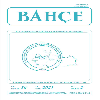FARKLI ÖN İŞLEMLER UYGULANARAK KAVRULMUŞ ÜZÜM ÇEKİRDEKLERİNİN FONKSİYONEL VE DUYUSAL ÖZELLİKLERİNİN BELİRLENMESİ
DETERMINATION OF THE FUNCTIONAL AND SENSITIVE CHARACTERISTICS OF GRAPE SEEDS UNDER DIFFERENT PRE–TREATMENTS
___
- Akın ve Altındişli, 2010. Emir, Gök Üzüm ve Kara Dimrit Üzüm Çeşitlerinin Çekirdek Yağlarının Yağ Asidi Kompozisyonu ve Fenolik Madde İçeriklerinin Belirlenmesi. Akademik Gıda 8(6):19–23.
- Amin, I., Lee W.Y., 2005. Effect of Different Blanching Times on Antioxidant Properties in Selected Cruciferous Vegetables. Journal of Science Food and Agriculture, 85:2314–2320.
- Anonim, 2017a. https://www.statista.com/ statistics/240635/total-vineyard-areasworldwide- and-in-europe (Erişim Tarihi: 05.07.2017)
- Anonim, 2017b. http://www.worldatlas. com/articles/top-grape-growing-countries. html (Erişim Tarihi: 05.07.2017).
- Bagchi, D., Bagchi M., Stohs S.J., Ray S.D., Sen C.K., Pruess H.G., 2002. Cellular Protection With Proanthocyanidins Derive From Grape Seeds. Annals of New York Academy of Science. 957:260–270
- Baydar, N.G., Akkurt M., 2001. Oil Content and Oil Quality Properties of Some Grape Seeds. Turk J. Agric. For, 25:163–8.
- Calligaris, S., Manzocco, L., Anese, M., Nicoli, M.C., 2004. Effect of Heat– Treatment on the Antioxidant and Pro– Oxidant Activity of Milk. International Dairy Journal, 14:421–427.
- Crozier A., del Rio D., Clifford M.N., 2010. Bioavailability of Dietary Flavonoids and Phenolic Compounds. Mol. Asp. Med. 31:446–467.
- Guendez, R., Kallithraka S., Makris D.P., Kefalas P., 2005. Determination of Low Molecular Weight Polimeric Constituents in Grape (Vitis vinifera sp.) Seed Extracts: Correlation with Antiradical Activity, Food Chemistry, 89:1–9.
- Ignat, I., Volf, I., Popa V.I., 2011. A Critical Review of Methods for Characterization of Polyphenolic Compounds in Fruits and Vegetables. Food Chem. 126:1821–1835.
- Jiang, Y., Simonsen J., Zhao Y., 2010. Compression–molded Biocomposite Boards from Redand White Wine Grape Pomaces. J. Appl. Polymer Sci. 119(5): 2834–46.
- Kinsella, J.E., E. Frankel, B. German and J. Kanner, 1993. Possible Mechanisms for the Protective Role of Antioxidants in Wine and Plant Foods. Food Technology 47:85–89
- Lapornik, B., M. Prosek and A.G. Wondra, 2005. Comparison of Extracts Prepared From Plant By–Products Using Different Solvents And Extraction Time. Journal of Food Engineering 71:214–222.
- Lee, S.C., Kim S.Y., Jeong S.M., Park W.P., Nam K.C., Ahn D.U., 2006. Effect of Heating Conditions of Grape Seeds on the Antioxidant Activity of Grape Seed Extracts. Food Chemistry 97:472–479
- Lu, Y. and Y.L. Foo, 1999. The Polyphenols Constituents of Grape Pomace. Food Chemistry 65:1–8.
- Maier, T., A. Schiber, D. Kammerer and R. Carle, 2009. Residues of Grape (Vitis vinifera L.) Seed Oil Production as a Valuable Source of Phenolic Antioxidants. Food Chemistry 112(3).
- Mayer, A.S., Jespen S.M. and Sorensen N.S., 1998. Enzymatic Release of Antioxidant for Humal Low–Denisty Lipoprotienfrom Grape Pomace. Journal of Agriculture and Food Chemistry 46(7): 2439–1446.
- Meral, R., 2016. Farklı Isıl İşlem Uygulamalarının Fenolik Bileşenler Üzerine Etkisi. Yüzüncü Yıl Üniversitesi Fen Bilimleri Enstitüsü Dergisi 21(1):55– 67.
- Nerantzis, E.T., Panagiotis T., 2006. Integrated Enology Utilization Of Winery By Products İnto High Added Value Products, Journal Of Science And Technology, Laboratory of Biotechnology & Industrial Fermentation, Dept. Of Enology & Beverage Technology, TEI of Athens, Greece.
- Nizamlıoğlu, N.M., Sebahattin N.A.S., 2010. Meyve ve Sebzelerde Bulunan Fenolik Bileşikler; Yapıları ve Önemleri. Gıda Teknolojileri Elektronik Dergisi 5(1): 20–35.
- Rakic, S., Petrovic, S., Kukic, J., Jadranin, M., Tesevic, V., 2007. Influence of Thermal Treatment on Phenolic Compounds and Antioxidant Properties of Oak Acorns from Serbia. Food Chemistry, 2:830–834.
- Rondeau, P., Gambier F., Jolibert F., Brosse N., 2013. Compositions and Chemical Variability of Grape Pomaces from French Vineyard. Ind. Crops Prod., 43:251–254.
- Ross, C.F., Hoye C. Jr., Fernandez V.C., 2011. Influence of Heating on the Polyphenolic Content and Antioxidant Activity of Grape Seed Flour. Journal of Food Science 76:884–890.
- Saito, M., H. Hosoyama, T. Ariga, S. Kataoka, N. Yamaji, 1998. Antiulcer Activity of Grape Seed Extract and Procyanidins. Journal of Agricultural and Food Chemistry 46:1460–1464.
- Sato, M., Maulik, G., Ray P.S., Bagchi D., Das D.K., 1999. Cardio Protective Effects of Grape Seed Proanthocyanidin against Ischemic Reperfusion Injury. Journal of Molecular and Cellular Cardiology. 31:1289–1297.
- ISSN: 1300-8943
- Yayın Aralığı: Yılda 2 Sayı
- Başlangıç: 1968
- Yayıncı: Atatürk Bahçe Kültürleri Merkez Araştırma Enstitüsü
Elman BAHAR, İlknur KORKUTAL, Hüseyin ÖNER
KİVİDE (Actinidia spp.) MEYVE KALİTESİNİ ETKİLEYEN FAKTÖRLER VE UYGULAMALAR
Alper DARDENİZ, Kemal Abdurrahim KAHRAMAN, Arif ATAK
Dilek Değirmenci KARATAŞ, Berfin KIZGIN, Hüseyin KARATAŞ
ELEKTROŞOK UYGULAMALARININ AŞILI ASMA FİDANI ÜRETİMİNDE FİDAN GELİŞİMİNE ETKİLERİ
Nesrin KARACA SANYÜREK, Atilla ÇAKIR, M. İlhan ODABAŞIOĞLU, Gökhan SÖYLEMEZOĞLU
VAN İLİ ASMA GEN POTANSİYELİ İÇERİSİNDE ÖNEMLİ BİR DEĞER: ERCİŞ ÜZÜMÜ
Nurhan KESKİN, Adnan DOĞAN, Cüneyt UYAK, Ruhan İlknur GAZİOĞLU ŞENSOY, Şeyda ÇAVUŞOĞLU
Cenk KOPLAY, Nurdan GÜNGÖR SAVAŞ, Esra ALBAZ, Emre ÇOŞKUNOĞLU
DÜNYA KURUTMALIK ÜZÜM ÜRETİMİ VE TİCARETİ
Tamer UYSAL, Cengiz ÖZER, Metin TUNA, Gülru YÜCEL, Onur ERGÖNÜL, Zeliha ORHAN ÖZALP
